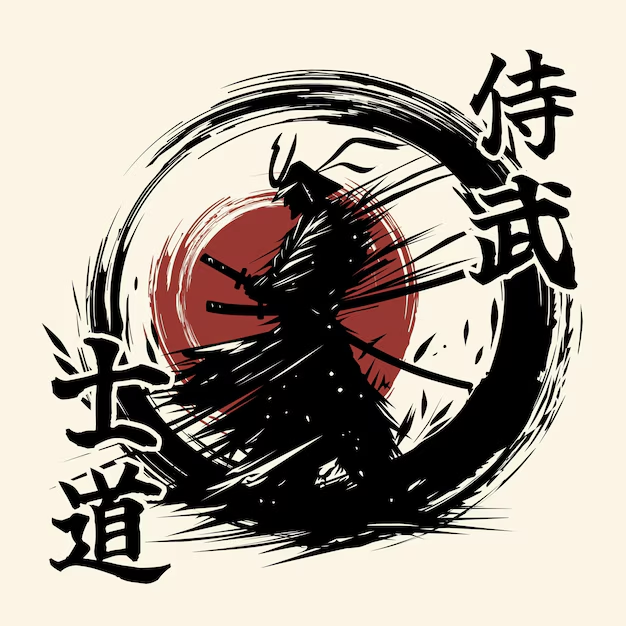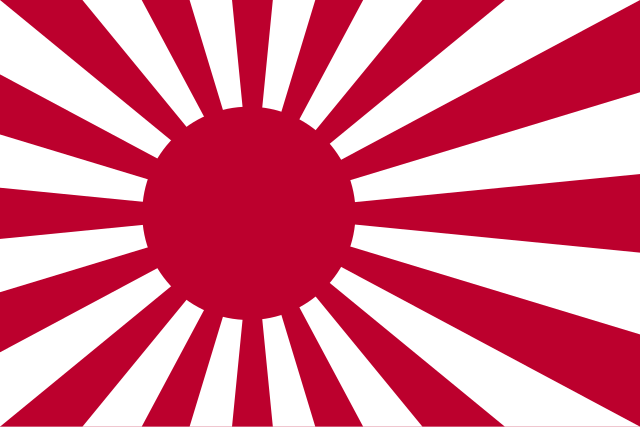
An informative document on the Bushido Code
Bushidō (武士道, "the way of the warrior") is the code of conduct for the samurai class and has a few variations, not to be confused with Budō (武道) or Bujutsu (武術), which are the overall teaching of Martial arts and self-improvement.
Origin of the Bushido and Samurai: The term 'bushido' first appeared as an unwritten moral code from the 12th century for the shogun. It wasn't until the 16th century, in the Japanese military record Kōyō Gunkan, did the term 'bushido' first appear. And since then, the Bushido code has become more developed. Many of its ideas and influence came from Shinto, a religion originating from Japan, and Zen Buddhism. By the mid-19th century, its principles had become a code of ethics throughout Japan, with loyalty's highest priority being the Emperor. But this was abandoned after their defeat in 1945 in WWII. In more modern times, elements are used in training martial arts.
There are several things this code teaches, which teach not just Martial arts, but the way of life as well. Martial arts include:
- Kendo (剣道), a modern version of Kenjutsu (剣術), which is a martial arts style that focuses on using swords likes katanas.
- Iaidō (居合道), a Japanese Martial art focused on being prepared to fight at a moment's notice, and has four main components: The controlled, smooth drawing the sword from its scabbard, cutting or striking the opponent, shaking the blood off of the blade, and replacing the sword in its scabbard.
- Aikido (合気道), which focused on self control and defending oneself and their attacker, by using fairly harmless throws and grapples to disarm and keep away attackers.
- Karate (空手), which means "Chinese-fist" is a blend of Chinese and Japanese martial arts that dates back to the 1330s, and focuses primarily on fighting unarmed against armed and unarmed opponents.
These are the 7 main virtues taught in Bushido:
- Honor (名誉, meiyo): A samurai's most important virtue, encompassing personal integrity and a strong sense of duty. As well as acknowledging moral responsibility. To win in a battle and to die in battle are both honorable. And if someone were to surrender or lose a battle and survive, the only way they could regain their honor was to commit Seppuku (切腹), also called harakiri (腹切り), which is a form of ritualistic suicide via disembowelment.
- Loyalty (忠義, chūgi): Unwavering devotion to one's family, country, but more importantly, their lord, which is more valued than loyalty toward one's family, even if it means harm to them.
- Courage (勇氣, yūki): Bravery in the face of danger and adversity, both physical and moral. This means not just being able to perceive what is right and wrong, but to act on it.
- Respect (禮, rei): Courtesy and politeness towards others, especially those of higher status, but not excluding those with lower status.
- Honesty (誠, makoto): Truthfulness and integrity in all dealings. Doing the right thing even when no one is watching.
- Benevolence (仁, jin): Being compassionate and kind towards others is important.
- Rectitude (義, gi): Acting with justice and righteousness is important to samurai and how they make decisions.

How the Bushido Code affected World War 2
The Japanese Emperor, using the Shinto religion which claimed that the royal family had divine origin, used some of the main concepts of bushido to give his army a goal and motivation to fight and die for. Though the officers corrupted it some as well, saying that their orders came from the Emperor, which made them divine, and so because of all this the soldiers would shout BANZAI! which means to attack fiercely and recklessly and so they charged or dive bombed into war. This modernized bushido which made honor above life not only made Japanese soldiers willing to die honorably but they also thought it to be honorable to their prisoners of war to kill them instead of letting them surrender.
Sources:
- “The History of the Bushido Code: Principles of Samurai Culture.” Invaluable, 31 July 2019, www.invaluable.com/blog/history-of-the-bushido-code.
- “Samurai | Meaning, History, & Facts.” Encyclopædia Britannica, 5 Sept. 2018, www.britannica.com/topic/samurai.
- History.com Editors. “Samurai and Bushido - Code, Japan & Meaning | HISTORY.” HISTORY, 28 Oct. 2009, www.history.com/articles/samurai-and-bushido.
- Wikipedia Contributors. “Bushido.” Wikipedia, Wikimedia Foundation, 7 Mar. 2019, en.wikipedia.org/wiki/Bushido.
- Wikipedia Contributors. “Iaido.” Wikipedia, 13 Apr. 2021, en.wikipedia.org/wiki/Iaido.
- Wikipedia Contributors. “Aikido.” Wikipedia, Wikipedia, 19 Oct. 2020, en.wikipedia.org/wiki/Aikido.
- Wikipedia Contributors. “Karate.” Wikipedia, Wikimedia Foundation, 18 Oct. 2019, en.wikipedia.org/wiki/Karate.
- Wikipedia Contributors. “Kendo.” Wikipedia, Wikimedia Foundation, 16 Dec. 2019, en.wikipedia.org/wiki/Kendo.
- Flanagan, Damian. “Bushido: The Samurai Code Goes to War.” The Japan Times, 23 July 2016, www.japantimes.co.jp/culture/2016/07/23/books/bushido-samurai-code-goes-war/.
- Quin, William. “The Emperor’s Retreat · Narratives of World War II in the Pacific · Bell Library Exhibits.” Www.tamucc.edu, 2018, www.tamucc.edu/library/exhibits/s/hist4350/page/emperorsretreat.
- Fassbender, Michael. “Bushido and Japanese Atrocities in World War II.” Michael Fassbender, 2 May 2015, michaeltfassbender.com/nonfiction/the-world-wars/big-picture/bushido-and-japanese-atrocities-in-world-war-ii/.
